Sometimes, online customer service can be tedious and repetitive.
But—
Chatbots for business never get bored. They have no problem answering the same question asked by customers for 10th or 100th time.
That’s why they are gaining popularity these days—they are better, faster, and a cheaper solution.
In this article, we will explore how to use them to your benefit.
Satisfy your customers with the best chatbots for your business
Now—
Are you ready to examine how chatbot technology can be used for business purposes?
Let’s take a closer look at different ways of implementing chatbot technology and some business chatbot use cases.
How to use chatbots for business
If you want to use chatbots for business, you first need to add a live chat to your website and social media. Then, create a conversational AI bot and activate it in your live chat widget. You can make your own bots for your business by using a chatbot builder. Popular chatbot providers offer many chatbot designs and templates to choose from.
If you’re comfortable designing your own dialog trees and chatbot workflows, making a chatbot from scratch may be the best choice for you. However, if you’re looking for a more simple and straightforward solution, then choosing ready-to-use chatbot templates may be a better option.
Now—
Here are a few chatbot business strategies and examples of how chatbots have proven to be successful for companies.
1. Use chatbot to resolve FAQs
Chatbots work 24/7 without complaining or lengthy customer service training sessions. This is important as 55% of users will likely abandon online purchases if they don’t receive quick answers to their questions.
So, the tech is here. We are way past the “Hello. IT. Have you tried turning it off and on again?” routine. There is really no excuse for making your customer wait and your agents answer repetitive questions over and over again.
Here is an example of an AI chatbot used by Bella Sante:
This med spa company was able to achieve 75% of live chat customer service automation with Lyro, Tidio’s AI-powered chatbot.
Lyro uses artificial intelligence technology to pull questions from the FAQ page and answer them in a conversational manner.

As Lyro provides answers to the most frequently asked questions on autopilot, Bella Sante customers have their info instantly, and their waiting times are significantly reduced.
Read more: Learn the benefits, types, and use cases of a FAQ chatbot.
2. Collect customer data and user feedback
Chatbots can either collect customer feedback passively through conversations or actively through surveys. The passive method can be very discreet—for example, a chatbot can tag customers who use specific phrases or product names. The second approach, chatbot surveys, is more explicit.

Both types of bots can be extremely useful for understanding what your customers want and how they feel about your company. But it’s important to design your chatbot surveys carefully, so you can get the most accurate information possible.
Read more: Find out the best customer satisfaction survey questions.
3. Give personalized product recommendations
One of the most successful examples of using chatbots for business is providing personalized recommendations. Ecommerce chatbots can automatically recognize customers, offer personalized messages, and even address visitors by their first names. You can easily set up separate chatbots for new customers, returning customers, or shoppers who are abandoning shopping carts.
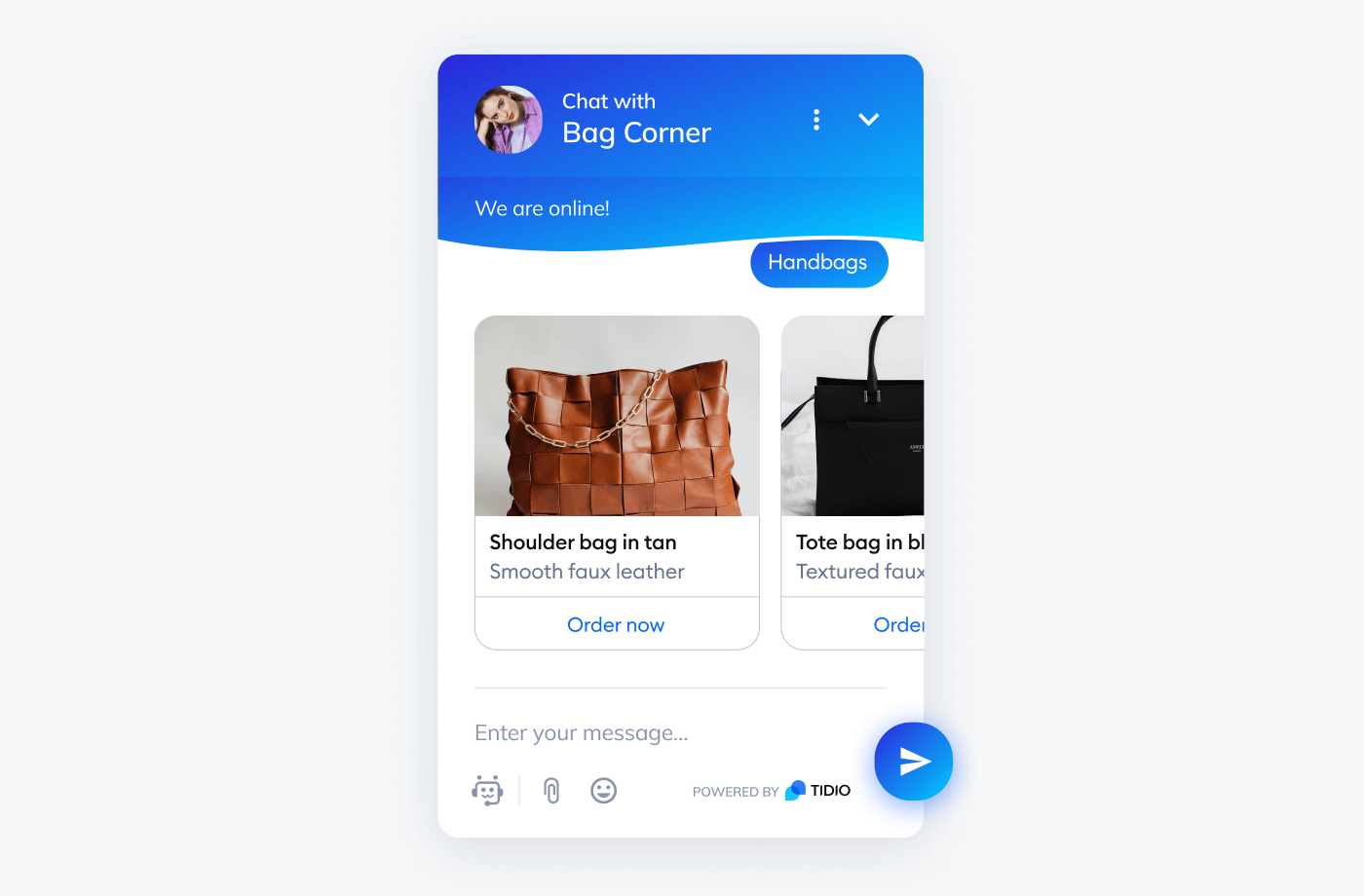
But how does this type of chatbot work in practice? Well, you can configure your chatbot to keep track of the products your customers have viewed or bought in the past. Then, bots will make future recommendations based on that data. You can also go through conversations and your customer database to create several client profiles. For example, new and returning customers may receive two very different welcome messages.
Read more: Learn how eye-oo boosted revenue after installing Tidio.
Create personalized shopping experiences with Tidio business chatbots
4. Qualify leads with lead generation chatbots
One of the best features of chatbots, business-wise, is their ability to generate and qualify leads. The easiest way to encourage visitors to leave an email or phone number is by offering something in return. Chatbots can provide discount codes or other lead magnets.
If you’re feeling extra lazy, you can even try to convince visitors to leave their contact information so they can start a conversation with the bot in the first place. For example, you can collect data with Tidio pre-chat surveys.
But bots nowadays can act as customer segmentation tools and qualify leads. Ask some questions about your visitor’s needs to discover who is your potential customer and who isn’t.
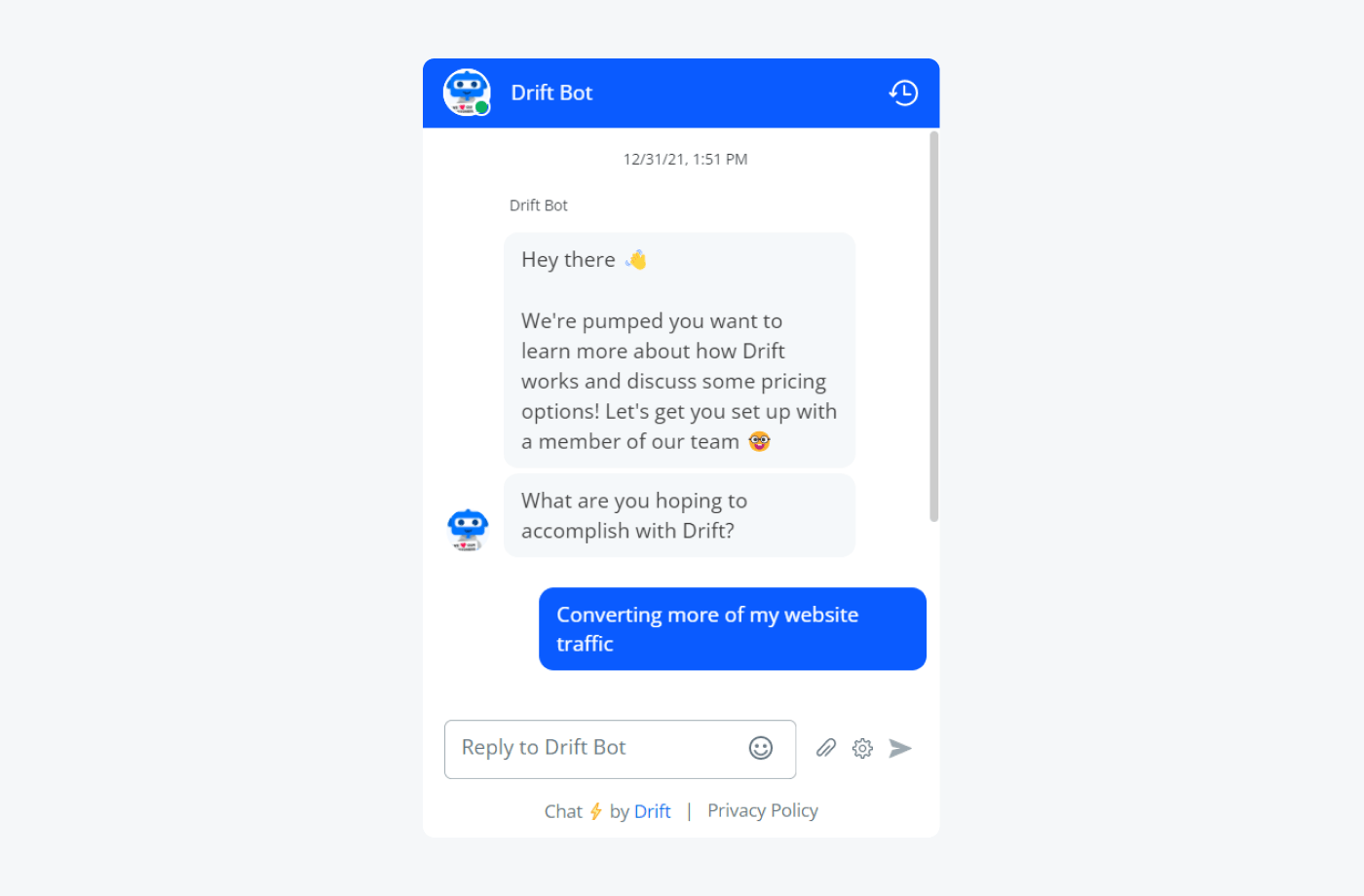
The example above shows a chatbot powered by Drift. It asks potential customers about their business goals and assigns them to specific customer service or sales agents. People are much more likely to talk about their needs and goals when asked by a cute bot than by a random popup.
Read more: See the best use cases of lead generation chatbots.
5. Weaponize social media for conversational sales
When it comes to online marketing, you need to have a strategy for acquiring customers. One of the most effective ways to do this is through social media and paid advertising. However, you can’t just put up an ad and expect people to buy from you. You need to know where you want to redirect their focus to.
Our suggestion? Try conversational sales with Facebook Messenger bots for business.
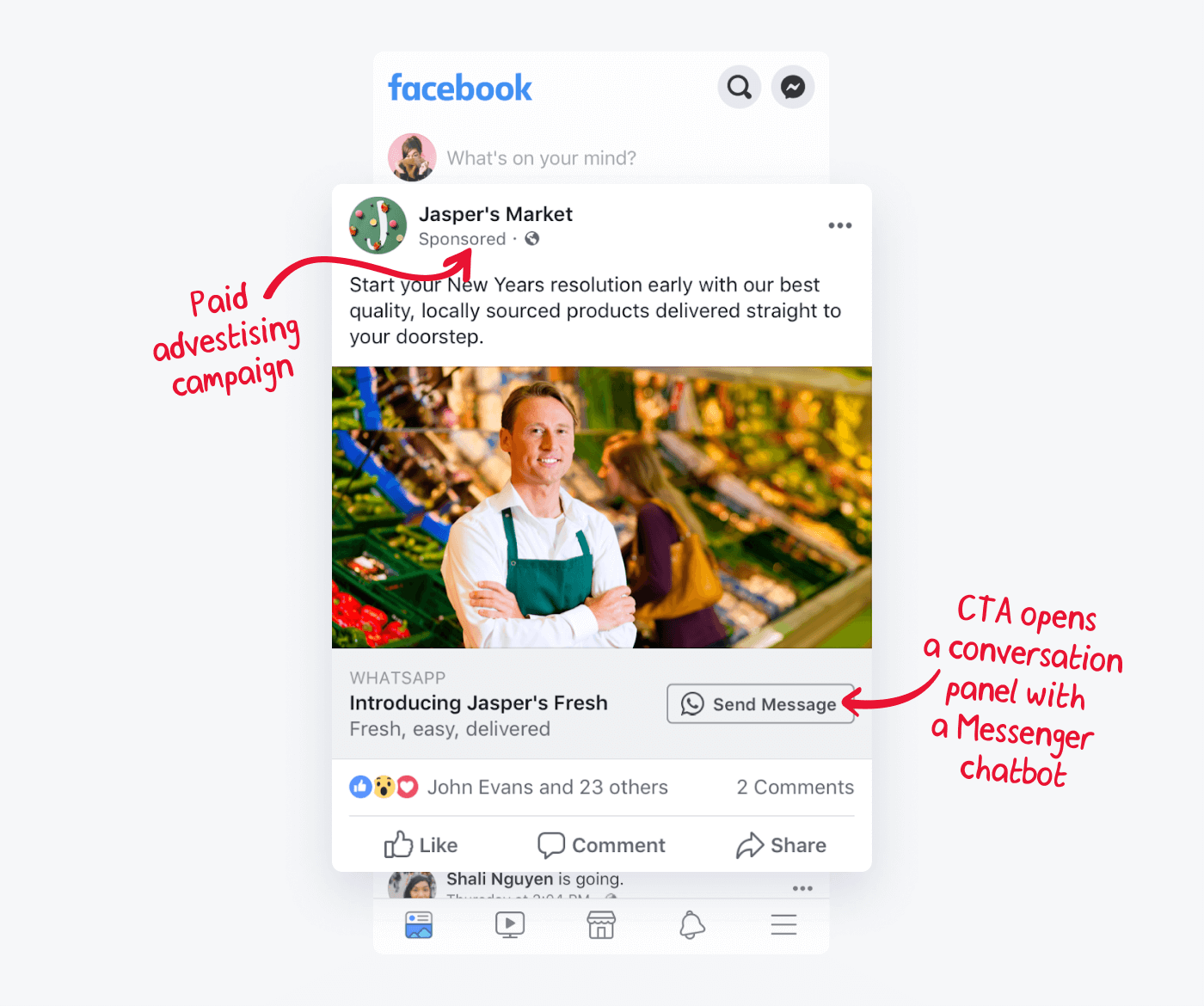
Traditionally, custom landing pages used to be the best way to make the most of your paid traffic. But chatbots and conversational landing pages convert 20% better than static landing pages.
With PPC, it is especially important to maximize the potential of your traffic. Using ads that send customers straight to your Messenger or WhatsApp chatbots is a fool-proof marketing strategy.
Read more: Find out the best Instagram bots you can use to increase likes and followers. Also, be sure to check out a complete guide on Facebook chatbots.
6. Reduce the number of abandoned shopping carts
Many businesses have a hard time understanding why anyone would abandon their cart. The answer is that people get overwhelmed easily. And they bounce when they are bombarded with too many steps or when they come across complications in the checkout process.
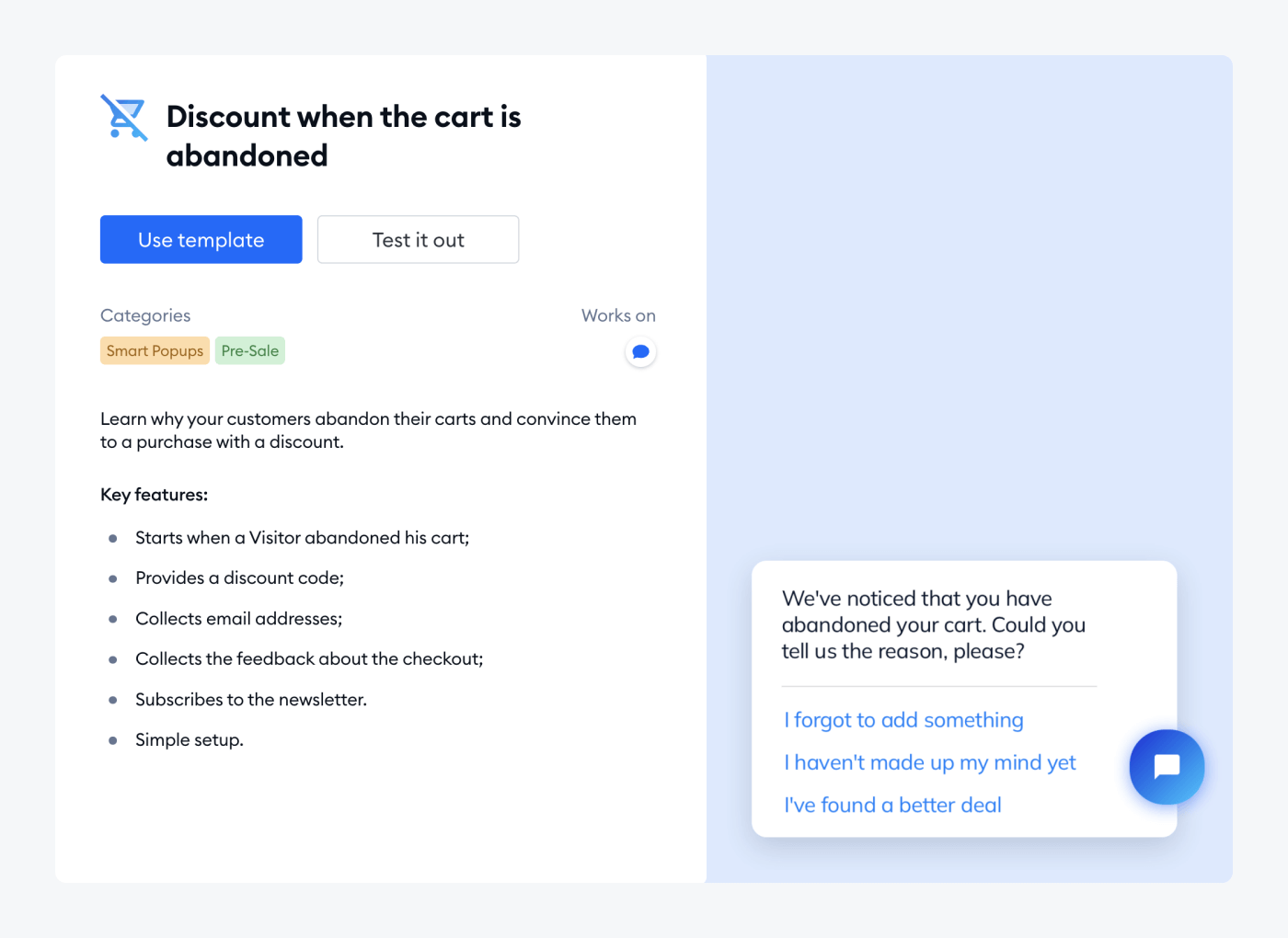
Chatbots can help reduce shopping cart abandonment rates by giving customers personalized assistance throughout the purchase process. For example, if a customer needs more information before making their decision, a chatbot can offer assistance and guidance to help them complete their purchase.
Read more: Check out the essential shopping cart abandonment statistics and KPIs. And while you’re at it, explore the best strategies for shopping cart abandonment.
7. Integrate bots for omnichannel communication
In the past, customer service usually happened over the phone. But now, multichannel customer service combines popular messaging apps, social networks, email and SMS texting.
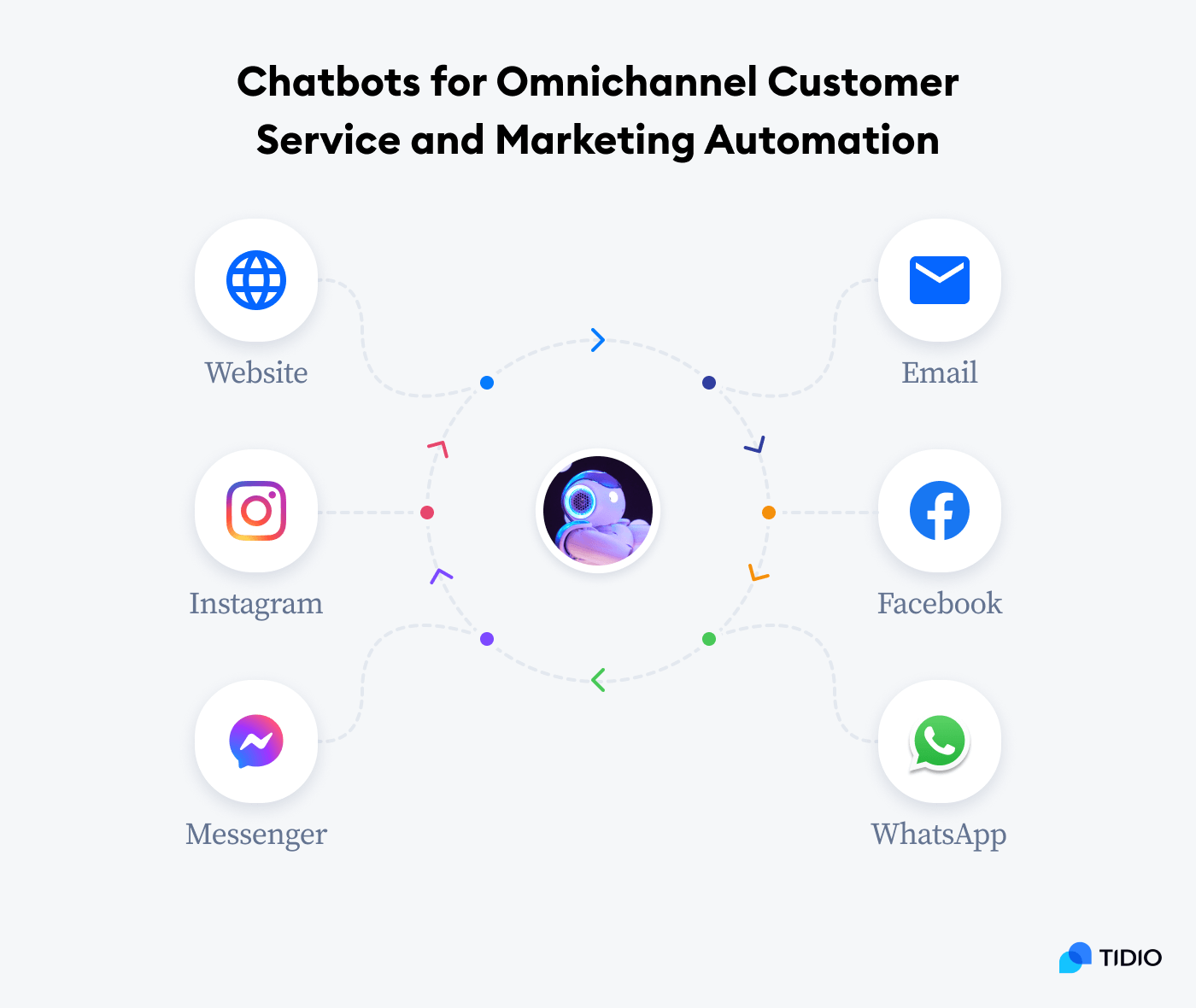
Chatbots can interact with customers on multiple channels simultaneously. With the click of a button, you can create one version of the bot for a website and then duplicate it for Messenger or Instagram. This allows businesses to provide a more uniform customer experience across different customer journey touchpoints.
Did you know…
Chatbots enjoy a much higher message response rate than emails. The average engagement rate for chatbots is around 10% (measured as the click-through rate for all website visitors). For email marketing, it’s below 3%.
Read more: Dive deeper into up-to-date chatbot trends and statistics with our dedicated report.
What is the best business chatbot for websites and online stores?
Chatbot pricing can be prohibitive, and you may not have the resources or expertise to do it yourself. That’s why so many small and medium-sized businesses are turning to plugin-based chatbot platforms and services.
These solutions allow you to create and manage your chatbot without any programming knowledge. They often come with a wide range of features and integrations. Some of them also have JavaScript APIs that give you full control over your bot messages and widget behavior.
Here are some of the best providers of AI chatbots for small businesses:
| Business chatbots | G2 Rating | Free plan | Best for |
|---|---|---|---|
| Tidio | 4.7/5 ⭐️ | ✅ | AI-powered chatbots |
| Chatfuel | 4.5/5 ⭐️ | Free trial | Automations |
| Botsify | 4.2/5 ⭐️ | Free trial | Chatbot builder |
| Drift | 4.4/5 ⭐️ | ❌ | Lead qualification feature |
1. Tidio
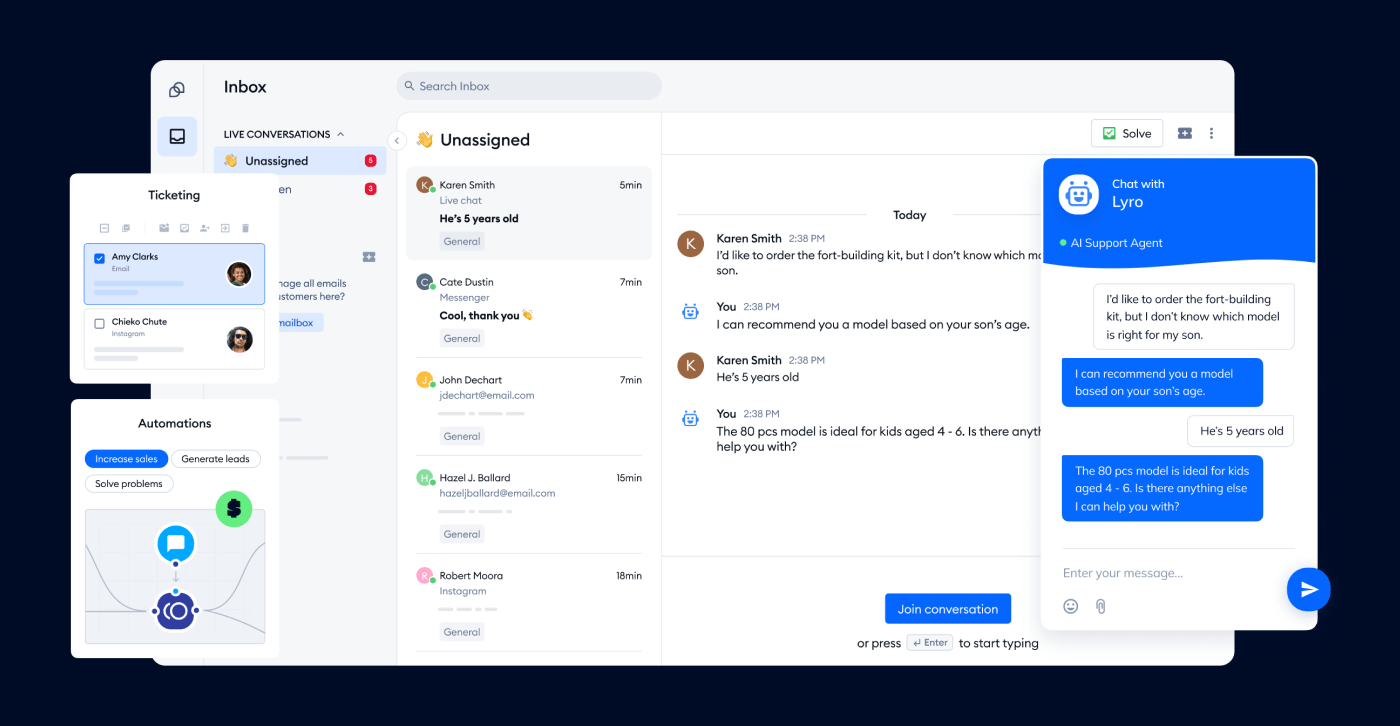
Rating: 4.7/5 ⭐️(1,535+ reviews)
Tidio is a free live chat and AI chatbot solution for business use that helps you keep in touch with your customers. It integrates with your website and allows you to send out messages to your customers. You can also use it to track the results of your marketing campaigns.
Main features:
- Lyro conversational AI
- Drag-n-drop visual chatbot builder and templates
- NLP chatbots
- Machine learning and intent recognition functionalities
- Many customization options and chatbot API
Pricing:
- 7-day free trial available
- Free version available
- Starter ($24.17/mo)
- Growth (starts at $49.17/mo)
- Plus (starts at $749/mo)
- Premium (starts at $2999/mo)
Create personalized shopping experiences with Tidio business chatbots
2. Chatfuel
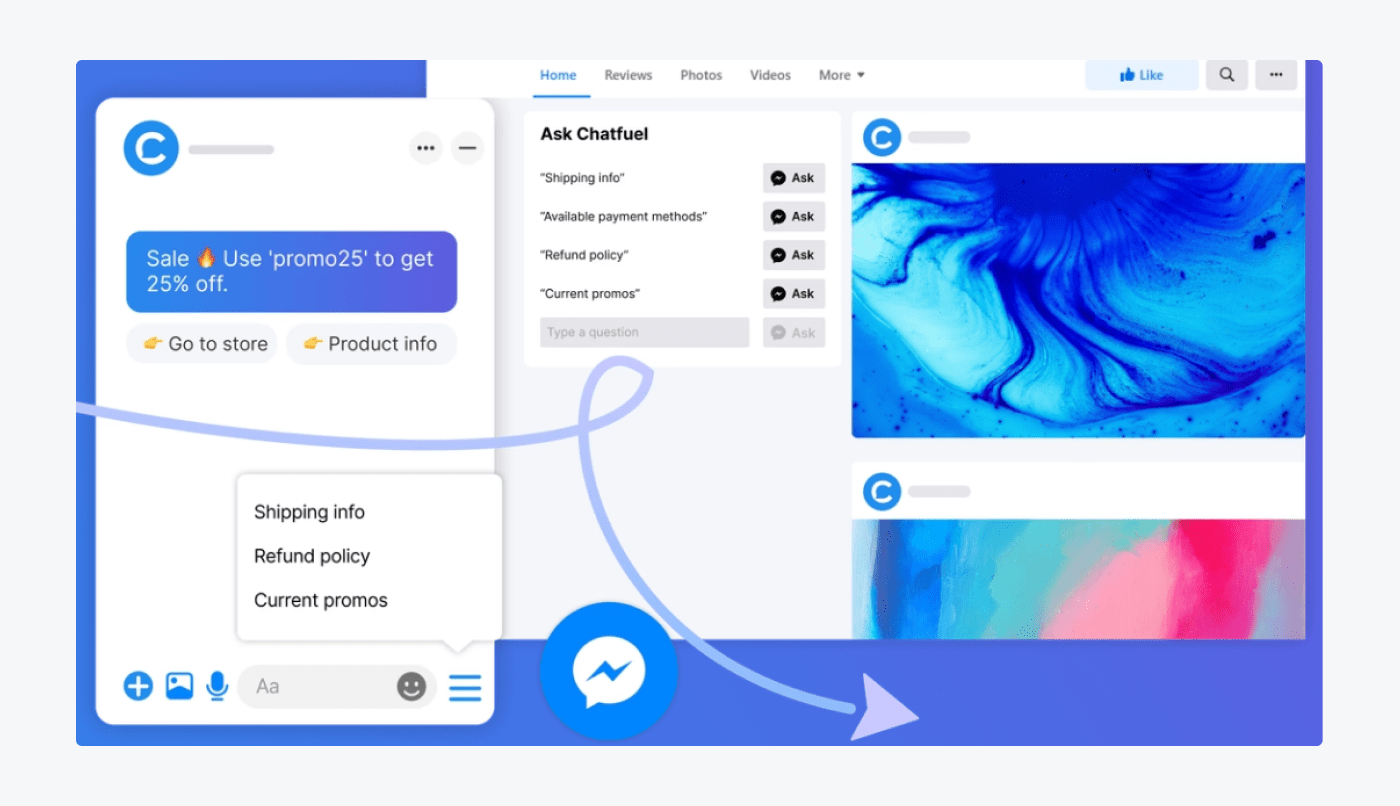
Rating: 4.5/5 ⭐️(40+ reviews)
Chatfuel is one of the leading chatbots for business. It enables you to create bots for Messenger, Telegram, and Viber without any programming knowledge. With Chatfuel, you can quickly and easily create engaging chatbots that provide a great user experience.
Main features:
- Automation for Facebook, WhatsApp, and Instagram
- Shared inbox
- Integrations with Google Sheets, ChatGPT, Stripe
- Free trial available
- Business ($14.99/mo)
- Enterprise ($300/mo)
3. Botsify
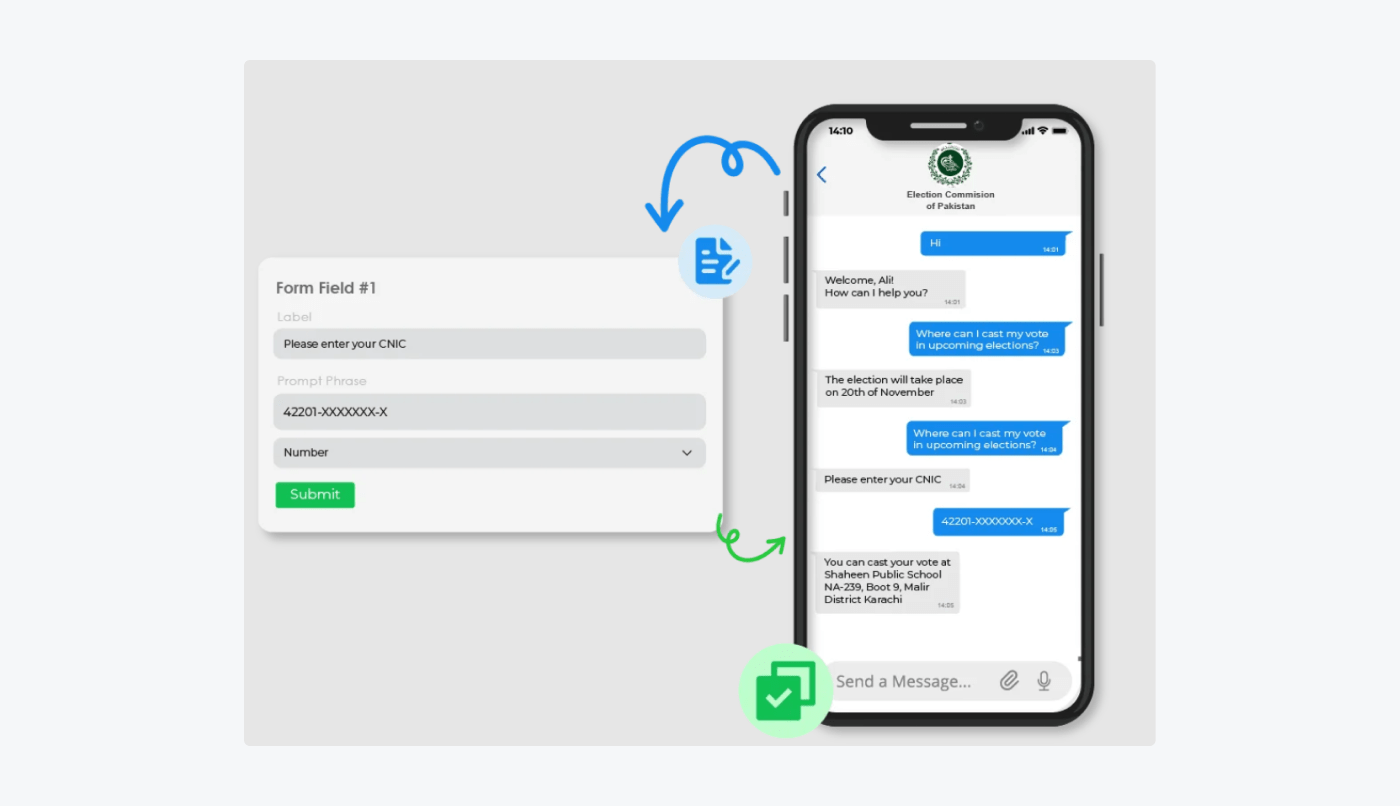
Rating: 4.2/5 ⭐️ (10+ reviews)
Botsify allows you to create chatbots for customer support, sales, and marketing. You can also use the platform to integrate your chatbot with your website or Facebook page. The user interface is easy to navigate, and the pricing plans are quite reasonable.
Main features:
- Customer service chatbot builder
- Multichannel functionality for Facebook, Telegram, Instagram, and WhatsApp
- APIs and SDKs
- Free trial available
- Do it yourself ($49/mo)
- Done for you ($149/mo)
- Custom → Contact sales
4. Drift
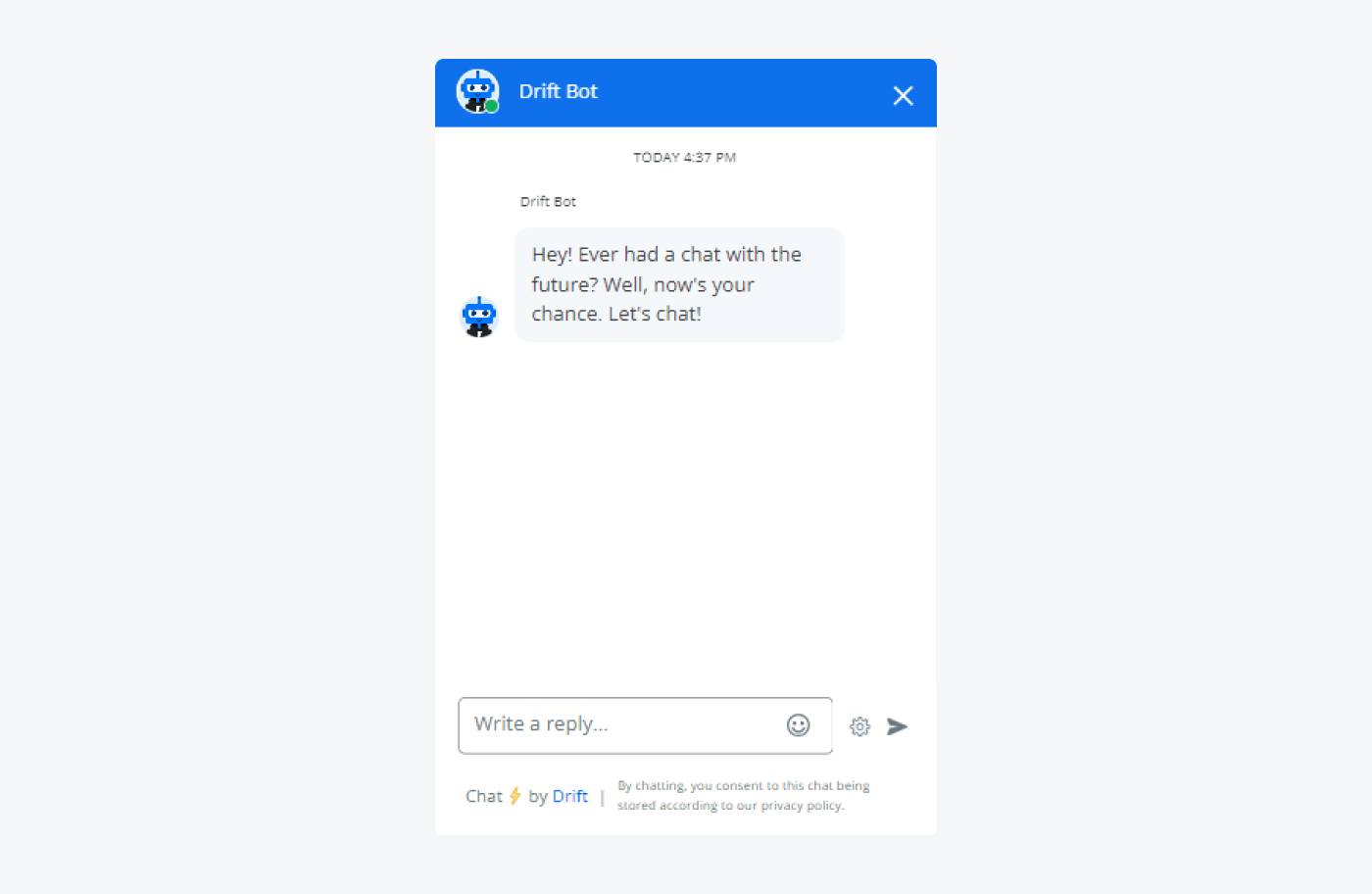
Rating: 4.4/5 ⭐️ (1,210+ reviews)
This conversational marketing platform allows you to create, manage, and monitor your chatbot campaigns from a single interface. You can design and deploy your bots for business in minutes and track their performance so you can optimize them for better results.
Main features:
- Conversational AI
- Integrations for marketing, CRM, and ecommerce
- Reporting and analytics
- Premium ($2,500/mo)
- Advanced → Contact sales
- Enterprise → Contact sales
Each of the four chatbot solutions for business presented above has a loyal user base. The main consideration will likely be your budget.
Chatbots for business: conclusion
Chatbots in business are great for handling simple customer inquiries and automating business processes. They can answer common customer questions and provide basic information about your product or service.
This can free up your customer support team from performing repetitive tasks and allow them to handle more complex inquiries.
Whether you’re looking to reduce shopping cart abandonment rates, provide better customer service, or simply want to increase sales, chatbots are a great way to achieve your goals. And the best part is that some of the chatbot companies allow you to add bots to your website and social media for free.
Now that you know all the amazing benefits of using chatbots for your business, it’s time to get started!
Create personalized shopping experiences with Tidio business chatbots
Frequently Asked Questions
To use a chatbot for business, start by identifying the tasks and interactions you want the chatbot to handle. Then, choose a suitable development platform, design the conversation flows, and develop and integrate the chatbot with your systems. Finally, make sure to thoroughly test it, deploy it, and continuously monitor and update based on performance and feedback.
Chatbots provide 24/7 availability, reduce cost savings, and offer instant responses to customer queries. They also allow scalability to handle high traffic, help create personalized interactions, and provide assistance in sales and lead generation.
The best chatbot depends on specific needs and budget. Popular options include Drift for sales and lead generation and Tidio for FAQ and AI-based chatbots.
You can buy a chatbot from direct websites of providers like Tidio and Drift, SaaS marketplaces like AWS Marketplace, or third-party vendors like Botsify.

